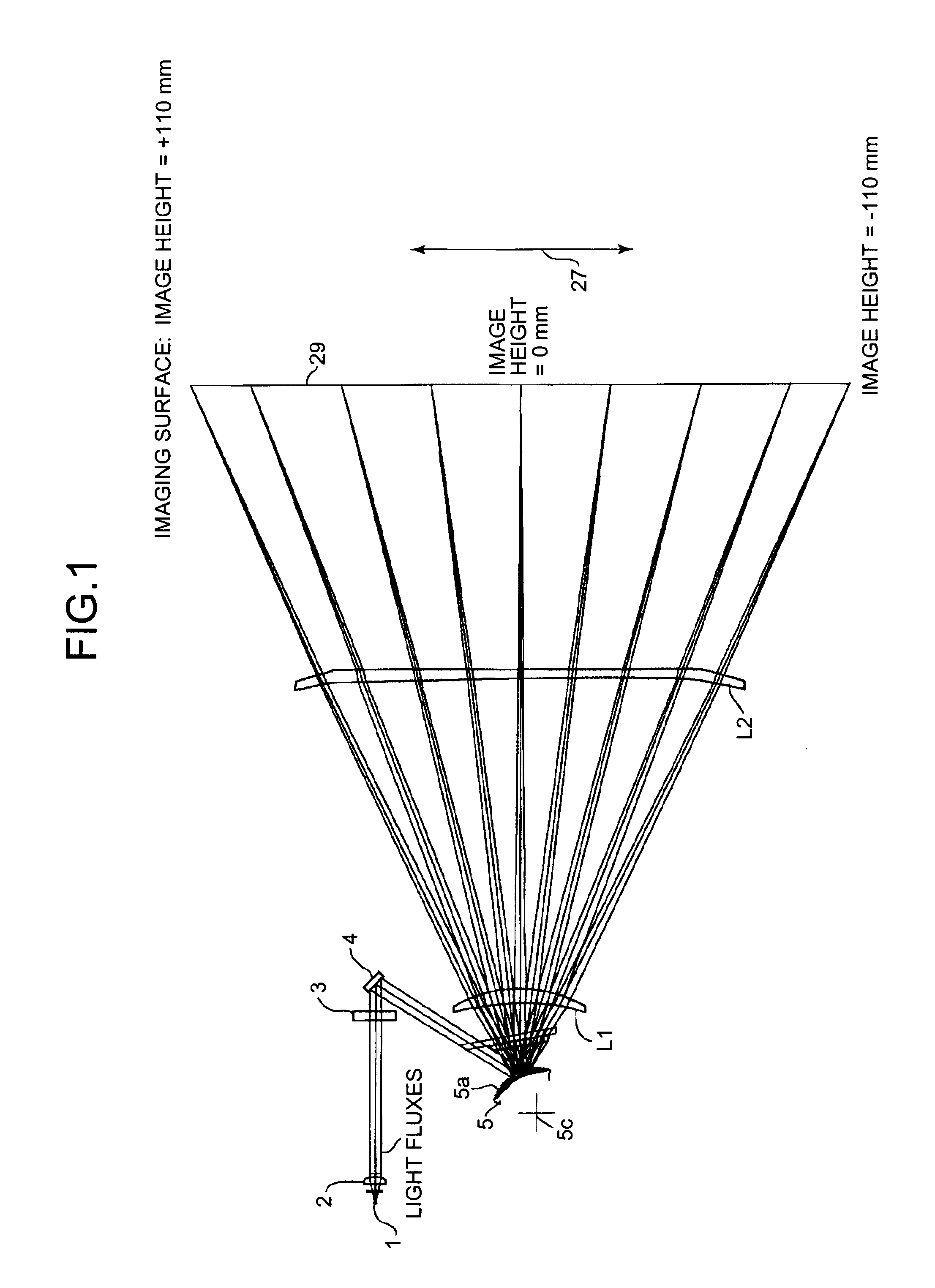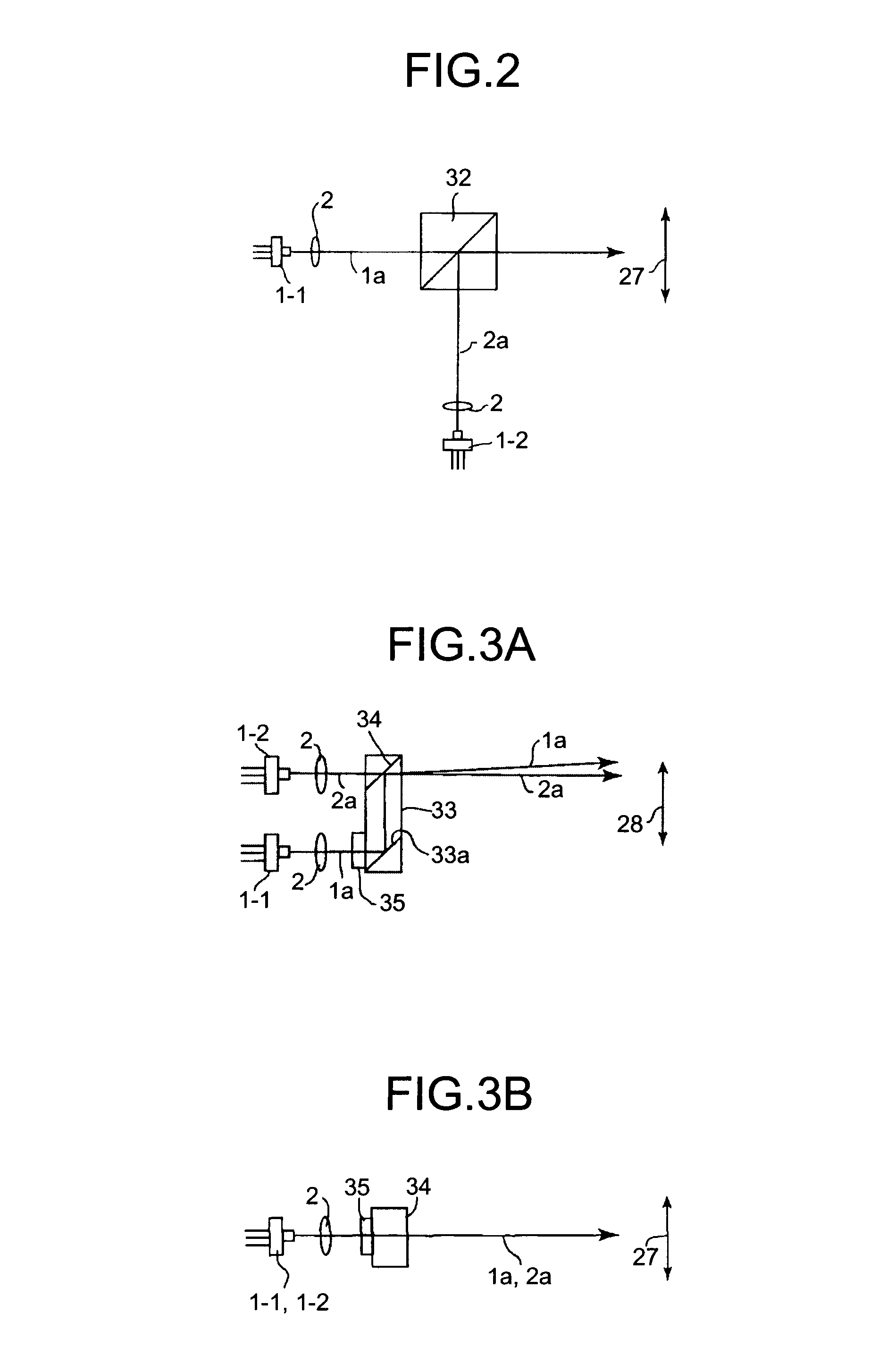Optical scanning device, and image forming apparatus
a scanning device and image forming technology, applied in the field of optical scanning devices and image forming apparatuses, can solve the problems of large scanning line “curve” for a large extent, image quality degradation, and cost and the size of the entire apparatus
- Summary
- Abstract
- Description
- Claims
- Application Information
AI Technical Summary
Problems solved by technology
Method used
Image
Examples
first embodiment
[0045]Exemplary embodiments of the present invention are explained in detail below with reference to the accompanying drawings. Like reference numerals refer to corresponding portions throughout the drawing, and the same explanations are not repeated. Some elements are not shown in the drawings for simplicity of illustration. FIG. 1 is a schematic diagram of an optical scanning device according to the present invention. The optical scanning device includes a semiconductor laser 1 as a light source that emits a light flux (light beams) with divergent quality, and a coupling lens 2 that couples the light flux into a form suited for a subsequent optical system. The light flux can be a parallel one as shown in FIG. 1, or have slight divergent or convergent quality.
[0046]The light flux from the coupling lens 2 is focused on a cylindrical lens 3 in the sub-scanning direction, then folded and reflected on a folding mirror 4 to the reflecting surface of a deflector. The light flux is focuse...
second embodiment
[0059]FIGS. 2, 3A and 3B are schematic diagram of semiconductor lasers 1-1 and 1-2 that emit light beams such that they are incident to the same reflecting surface of the deflector at the same angle with respect to the main scanning direction according to the present invention.
[0060]The first embodiment employs a semiconductor laser array as a light source. An optical scanning device of the second embodiment includes a plurality of the semiconductor lasers 1-1 and 1-2.
[0061]Referring to FIG. 2, one example of the light source structure is explained below. In the second embodiment, a prism 32 is used as a beam-combining unit that brings the light beams closer to each other in the main scanning direction 27. As shown in FIG. 2, the semiconductor lasers 1-1 and 1-2 are arranged separately. Each coupling lens 2 converts each of the light beams 1a and 2a, respectively emitted from the semiconductor lasers 1-1 and 1-2 into a desired form, i.e., for example, parallel, diverging, or converg...
third embodiment
[0068]the present invention relates to an optical scanning device where each of a plurality of light beams that are directed to the same scanned surface cross at the proximity of a reflecting surface, at a different angle with respect to the main scanning direction, upon entering a deflector.
[0069]As an example, a multi-beam-crossing light source is explained. In FIG. 4, the semiconductor lasers 1-1 and 1-2 engage into the engaging holes 405-1 and 405-2, respectively, penetrating through a base member 405. The engaging holes 405-1 and 405-2 are given a slight angle, approximately 1.5° in the third embodiment, with respect to the main scanning direction. Therefore, the semiconductor lasers 1-1 and 1-2, which are engaged into the engaging holes 405-1 and 405-2, are also given the angle of approximately 1.5° with respect to the main scanning direction. The semiconductor lasers 1-1 and 1-2 have a cylinder-shaped heat sink element 1-1a and 1-2a, respectively, on which a cutoff is formed....
PUM
 Login to View More
Login to View More Abstract
Description
Claims
Application Information
 Login to View More
Login to View More - R&D
- Intellectual Property
- Life Sciences
- Materials
- Tech Scout
- Unparalleled Data Quality
- Higher Quality Content
- 60% Fewer Hallucinations
Browse by: Latest US Patents, China's latest patents, Technical Efficacy Thesaurus, Application Domain, Technology Topic, Popular Technical Reports.
© 2025 PatSnap. All rights reserved.Legal|Privacy policy|Modern Slavery Act Transparency Statement|Sitemap|About US| Contact US: help@patsnap.com



